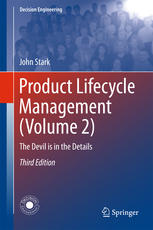

Most ebook files are in PDF format, so you can easily read them using various software such as Foxit Reader or directly on the Google Chrome browser.
Some ebook files are released by publishers in other formats such as .awz, .mobi, .epub, .fb2, etc. You may need to install specific software to read these formats on mobile/PC, such as Calibre.
Please read the tutorial at this link: https://ebookbell.com/faq
We offer FREE conversion to the popular formats you request; however, this may take some time. Therefore, right after payment, please email us, and we will try to provide the service as quickly as possible.
For some exceptional file formats or broken links (if any), please refrain from opening any disputes. Instead, email us first, and we will try to assist within a maximum of 6 hours.
EbookBell Team

4.1
70 reviewsThis second volume moves beyond a general introduction to product lifecycle management (PLM) and its principal elements to provide a more in-depth analysis of the subjects introduced in Volume 1 (21st Century Paradigm for Product Realisation).
Providing insights into the emergence of PLM and the opportunities it offers, key concepts such as the PLM Grid and the PLM Paradigm are introduced along with the main components of PLM and the associated characteristics, issues and approaches.
Detailing the 10 components of PLM: objectives and metrics; management and organisation; business processes; people; product data; PDM systems; other PLM applications; facilities and equipment; methods; and products, it provides examples and best practices.
The book concludes with instructions to help readers implement and use PLM successfully, including outlining the phases of a PLM Initiative: development of PLM vision and strategy; documentation of the current situation; description of future scenarios; development of implementation strategies and plans; implementation and use. The main activities, tasks, methods, timing and tools of the different phases are also described.